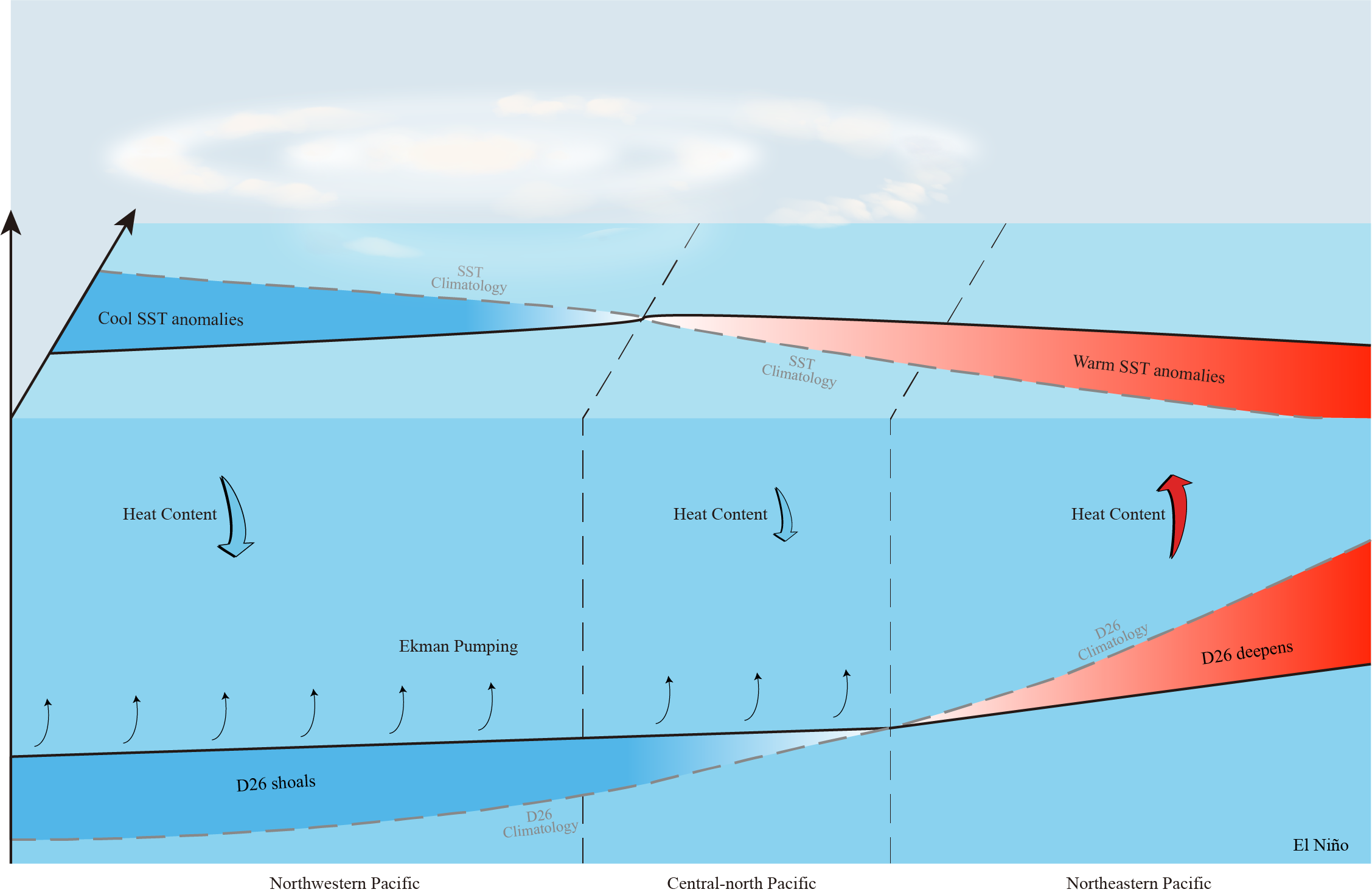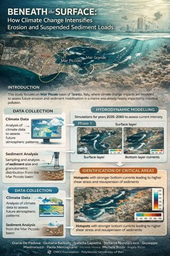Subsurface Ocean Matters for Cyclogenesis
Published in Earth & Environment

Tropical cyclones, commonly known as hurricanes, cyclones, and typhoons, are destructive weather events that can cause significant damage to communities in their path. Forming over warm ocean waters, these powerful storms bring strong winds, heavy rainfall, and storm surge that can cause widespread flooding and destruction of life, property, and infrastructure. For example, in 2017, Hurricane Harvey hit the coast of Texas and Louisiana, causing widespread damage and flooding. The storm caused an estimated $125 billion in damages and claimed over 100 lives, making it one of the costliest natural disasters in U.S. history.
Although the detailed physical processes of tropical cyclone formation are still not well understood, there are several key large-scale conditions that must be present for tropical cyclone genesis to occur. First, there must be ocean heat content with a temperature of at least 26.5 degrees Celsius (80 degrees Fahrenheit) to provide the necessary energy for the storm to develop. Second, there must be a pre-existing weather disturbance or low-pressure area for the storm to develop around. Third, there must be enough moisture in the atmosphere to fuel the storm. Finally, there must be light wind shear, or a change in wind direction and speed with height, to allow the storm to organize and grow. Under these conditions, a tropical cyclone may form and go on to develop and intensify.
As it does for most weather phenomena, El Niño also affects cyclones. El Niño, the positive phase of the El Niño Southern oscillation or ENSO, is characterized by an unusual warming in the central and eastern equatorial Pacific Ocean. This warming is accompanied by an eastward expansion of the western Pacific warm pool (one of the largest bodies of warm water). The western Pacific warm pool acts as an efficient engine for supplying requisite heat and moisture, both of which are vital for initiating a tropical cyclone as a Carnot heat engine. This Carnot heat engine operates between the warm ocean and the cold upper atmosphere. As expected, the average location of tropical cyclone genesis moves eastward during El Niño, and tropical cyclones are stronger than usual. However, the frequency of tropical cyclones during an El Niño remains the same as during a neutral year or La Niña year; La Niña being the cold phase of ENSO.
When El Niño is present, more tropical cyclones form in the central-north Pacific and fewer form in the northwestern Pacific. However, there seems to be a balance between the increase and the decrease, resulting in almost the same number tropical cyclones whether an El Niño or a La Niña occurs or not. That begs the question: what maintains the balance?
Our recent study published in Nature Communications highlights the suppression of subsurface ocean conditions for tropical cyclone genesis during El Niño. Our team at Shanghai Jiao Tong University, in collaboration with the South China Sea Institute of Oceanology, National Taiwan University, and the Indian Institute of technology Bombay, conducted the research. We combined in-situ observations, satellite data, and computer modeling to study the relationship between subsurface ocean temperature and tropical cyclone genesis in the North Pacific basin. Our findings show that the temperature of the subsurface ocean (represented by the depth of the 26˚C isotherm or D26) plays a crucial role in the formation of tropical cyclones and can be a limiting factor even when the sea surface temperatures (SSTs) are anomalously warm and conducive to cyclogenesis.
It was surprising to discover that there is an anti-correlation between SSTs and D26 in the central-north Pacific under certain circumstances, i.e., between ENSO events. This means that when SSTs are warmer, D26 is shallower, and vice versa. Since tropical cyclone heat potential is determined by both SSTs and D26, only considering SSTs turns out to be misleading. This goes against the traditional understanding that a warmer SST represents a deeper thermocline depth (the depth at which the maximum potential temperature gradient occurs). This covariation is also a key assumption for ENSO theories, such as the recharge-discharge oscillator model.
Further, we want to confirm the impact on cyclogenesis by the unexpected anti-correlation in experiments. Clearly, we cannot use the Earth or the Pacific Ocean as a laboratory to conduct “real” perturbation experiments. However, we can perform such experiments on supercomputers using climate models, which are mathematical simulations of the Earth's climate system. The best available climate simulations are from the current state-of-the-art models under the sixth phase of the Coupled Model Intercomparison Project (CMIP6). Considering the spatial scales of tropical cyclones, we applied 10 HighResMIP models (a CMIP6 project featuring the highest resolutions) to test our claim above. The results show that there is a statistically significant positive relationship between tropical cyclone frequency and correlation coefficient between SSTs and D26. In other words, if the negative correlation observed in nature were shifted to be positive, there would be more tropical cyclones during El Niño, at least according to climate models.
We cannot underestimate the role of the anti-correlation between surface and subsurface ocean conditions during El Niño on cyclogenesis because global warming is projected to be El Niño-like, but this pattern would last for a relatively longer trend timescale. Moreover, future El Niño events are projected to be more frequent and intense. The lack of a quantitative theory and long-term homogenous observations for cyclogenesis handicap the projections of the change of tropical cyclone frequency under ongoing global warming. It is still unclear whether global warming will increase the frequency of tropical cyclones. Global climate models do not explicitly represent tropical cyclones and future projections depend on cyclogenesis and related cyclone processes for future projections of tropical cyclone response to global warming. Our results provide a constraint on the projection of future tropical cyclone frequency which must be considered in interpreting model dynamics for the future of tropical cyclones in a warmer world.

Follow the Topic
-
Nature Communications

An open access, multidisciplinary journal dedicated to publishing high-quality research in all areas of the biological, health, physical, chemical and Earth sciences.
Related Collections
With Collections, you can get published faster and increase your visibility.
Women's Health
Publishing Model: Hybrid
Deadline: Ongoing
Advances in neurodegenerative diseases
Publishing Model: Hybrid
Deadline: Mar 24, 2026



Please sign in or register for FREE
If you are a registered user on Research Communities by Springer Nature, please sign in